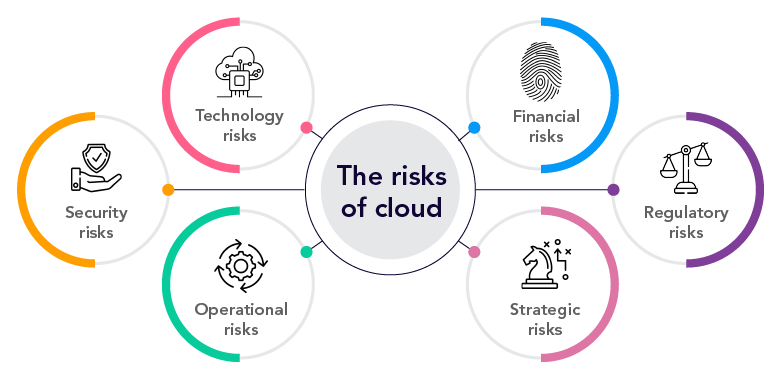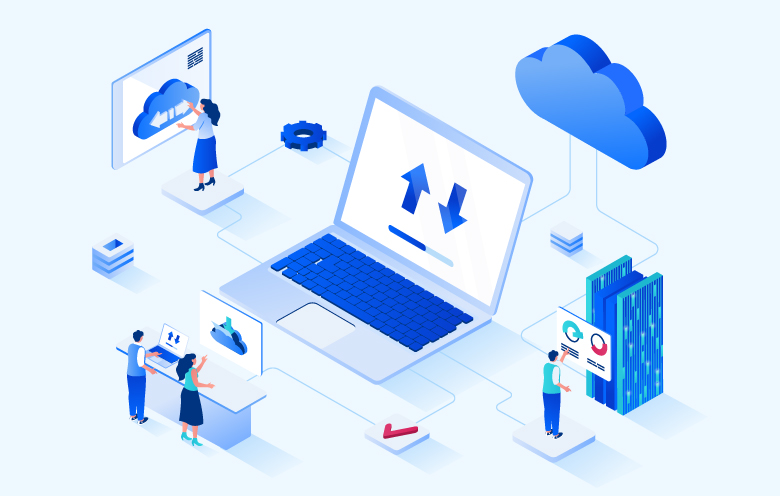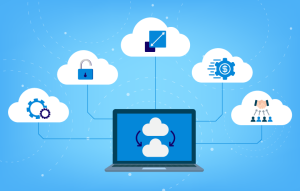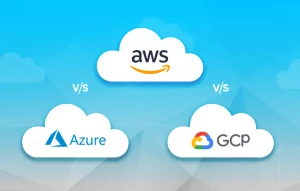As a software engineer, cloud engineer, DevOps engineer, SRE engineer, or tech leader, you’re likely familiar with the terms ‘cloud-based applications’ and ‘cloud-native applications.’ But what do these terms really mean, and how can they transform your organization’s product development and management? This article is not just about buzzwords. It is a comprehensive guide that will equip you with the knowledge to enhance scalability, high availability, and speed up your solutions delivery.
Let’s get started.
Traditional applications vs. cloud-based applications vs. cloud-native applications
Let’s start with understanding the differences between traditional, cloud-based, and cloud-native applications.
|
Aspect / Features |
Traditional applications |
Cloud-based applications |
Cloud native applications |
|---|---|---|---|
|
Architecture |
Monolithic, tightly coupled with underlying OS |
Often migrated from traditional architectures, can be monolithic or modular |
Microservices, containerized, loosely coupled |
|
Development duration |
Longer development cycles, released as one package |
Faster than traditional due to cloud integration, but slower than cloud-native |
Faster development with iterative releases using CI/CD pipelines |
|
OS dependency |
High dependency on the underlying OS |
Reduced dependency, often uses virtual machines or managed services |
Abstracted OS layer, allowing flexibility and easier migration |
|
Scalability |
Requires additional hardware and complex processes to scale |
Easier to scale than traditional, uses cloud resources but may face some limits |
Easily scalable, auto-scaling capabilities |
|
Cost model |
High upfront costs, requires investment in hardware |
Pay-as-you-go model, more cost-effective than traditional |
Pay-as-you-go, cost-effective based on usage |
|
Release time |
Slower release cycles, updates and bug fixes take longer |
Faster release cycles than traditional, but not as quick as cloud native |
Rapid release cycles, continuous integration and delivery |
|
Transition |
Handoffs between development and operations teams, creating silos |
Smoother than traditional, but still may involve some handoffs |
Smooth transition from development to production, DevOps practices |
|
Development / Operations cost |
High setup and maintenance costs, less efficient in resource usage |
Lower costs than traditional, utilizes cloud resources |
Lower operational costs, only pay for what you use, optimized resource usage |
|
Automation |
Limited automation, more manual processes |
More automated than traditional, uses cloud services |
High level of automation, infrastructure as code |
|
Downtime |
Higher downtime during updates and maintenance |
Reduced downtime compared to traditional, but not as minimal as cloud-native |
Minimal to zero downtime, seamless updates |
|
Backup and recovery |
Low backup capabilities, manual and error-prone |
Improved backup capabilities using cloud solutions |
Automated backups, robust disaster recovery mechanisms |
|
Modularity |
Tightly coupled components, harder to update and scale |
More modular than traditional, but may still have some monolithic aspects |
Highly modular, independent microservices that are easier to update and scale |
|
Flexibility |
Limited flexibility, changes require significant effort |
More flexible than traditional, but less so than cloud-native |
Highly flexible, easy to deploy and redeploy resources as needed |
|
Efficiency |
Lower efficiency, manual processes and limited resource optimization |
Improved efficiency, better resource management with cloud services |
High efficiency, automated processes, and optimal resource utilization |
|
Testability |
Manual testing processes, slower feedback cycles |
Improved testability with cloud-based tools, but may not be fully automated |
Automated testing, continuous integration, and delivery pipelines |
|
Disposability |
Long startup and shutdown times, less robust to failures |
Improved disposability, but not as fast as cloud-native |
Fast startup and shutdown, resilient to failures, quick recovery |
|
User experience |
Potentially slower, less responsive, dependent on hardware capacity |
Improved user experience, faster and more responsive than traditional |
Optimal user experience, highly responsive, seamless updates |
|
Resource allocation |
Static resource allocation, often under or over-provisioned |
Dynamic resource allocation, better utilization of cloud resources |
Optimal resource allocation, automatic scaling based on demand |
|
Security |
Security managed in-house, potentially higher risk of breaches |
Enhanced security with cloud provider’s tools, but shared responsibility |
Built-in security features, continuous monitoring, and updates |
|
Innovation |
Slower pace of innovation due to longer development cycles |
Increased innovation potential, faster deployment of new features |
High innovation potential, rapid experimentation, and deployment of new features |
It is evident that cloud-native applications, with their microservices and CI/CD advantages, are ideal for large enterprises. Mid-sized companies may find cloud-based applications a more manageable and effective step in modernizing their operations.
Cloud-based applications vs. cloud-native applications in the simplest manner
Think of it this way: Cloud-based applications are like moving traditional businesses to modern offices and utilizing new facilities. Cloud-native applications are like designing businesses from scratch to fully exploit the features of the modern office, ensuring optimal efficiency and growth potential.
In short:
Cloud-native applications: Built for the cloud, leverage microservices, containers, and CI/CD for maximum scalability and agility.
Cloud-based applications: Traditional applications adapted to run in the cloud benefit from cloud infrastructure but do not fully utilize cloud-native features.
Why is cloud-based application development a good way to go for mid-sized companies?
The cloud has undoubtedly changed the way businesses operate. That impact is going to grow with two main reasons:
- As more organizations lock on its transformative power, and
- As new technologies emerge to deliver even more services and functionality.
How an organization recognizes the cloud’s power is not in anyone’s control. However, how a cloud-based application developer or a SaaS provider integrates emerging technologies like artificial intelligence (AI), virtual reality (VR), or machine learning (ML) into cloud-based solutions is the key differentiator. Such integration drives a new wave of innovation and spawns a host of exciting opportunities in business, for example:
- Instead of building a recommendation engine from scratch, e-commerce companies can now easily access and integrate an off-the-shelf engine.
- Using readily available video intelligence modules, developers can now extract actionable insights from video files. This eliminates the need to develop their own ML or computer vision models.
- Subscribe to modules that provide a fully managed service for connecting, managing, and analyzing data from globally dispersed IoT devices easily and securely. Such modules can support a wide range of services, from developing a system that detects pipeline cracks automatically to sending alerts to maintenance engineers to attend.
Most of these solutions are data-intensive and require massive processing power, making them ideal for the cloud. The cloud acts as a key enabler for building sophisticated new solutions. What matters is how a cloud-based application developer identifies your needs, understands the native capabilities of the cloud, and makes the best of the cloud for you.

Cloud strategy and assessment workshop
The adoption of cloud-based infrastructure by enterprises is increasing greatly. However, a lot of enterprises are still reluctant to adopt a cloud strategy due to lack of skills or knowledge.
What sets any company apart in cloud application development?
The cloud undoubtedly provides many benefits, but it has cloud migration challenges and risks. From deployment costs to security and operational challenges, the challenges and risks range in nature and scale.
During cloud migration or cloud application development, a company should advise clients on which processes or operations are best suited to migration or cloud app development with reduced risks and which cloud model is most appropriate – private, public, or hybrid.
A company shall take care of the following challenges and risks during cloud migration or cloud application development:

Technology risks:
Implement robust security controls and procedures to safeguard data from cyber attacks.Careful analysis ensures the right aspects of the client’s workload migrate to the cloud for optimal cloud resource use.
Security risks:
Develop comprehensive security strategies for the client’s technology and data since the cloud does not ensure it automatically. Implementing the proper security measures is as crucial as implementing the cloud-based solution.
Operational risks:
Plan meticulously to integrate the client’s current infrastructure with cloud-based solutions to prevent data leakage or loss.
Financial risks:
Proper usage estimation and accurate configuration help avoid costly mistakes in cloud utilization.
Regulatory risks:
Stay vigilant about compliance with data protection laws to avoid financial and reputational risks.
Strategic risks:
Formulate coherent cloud migration strategies to ensure expected ROI and responsibly manage dependence on third-party service providers.
Also read:Which are the best steps for on-premises to cloud migration – step-by-step guide?
Benefits of cloud-based applications across different functions within organizations
Cost savings, security, scalability, flexibility, accessibility, and efficient data management are some of the traditional benefits of cloud-based applications. Since this is a complete guide on cloud-based applications for technology leaders, we have compiled real-world examples of cloud benefits and how they impact different organizational functions.
Product
- Accelerated speed to market: By partnering with Amazon Web Services (AWS), Salesforce expanded globally without building its data centers. This partnership also ensured compliance with local data laws, streamlining their international growth.
- Enhanced product testing and development: Stanford researchers developed a digital method to test new drug compounds before physical trials. This innovation speeds up the development process and reduces costs associated with physical testing.
Operations
- Lower time and process costs: An insurance company processes routine claims automatically using computer vision and text analysis. This approach significantly reduces time and costs compared to manual processing.
- Higher return on assets: An industrial conglomerate optimized its wind turbines with IoT and real-time analytics. This adjustment led to a double-digit increase in energy output, maximizing asset efficiency.
Finance
- Dynamic pricing: A heavy plant manufacturer uses cloud-based dynamic pricing tools to improve dealer relationships. These tools also help increase profits and sales volume.
- Focused allocation of resources: A farm machinery manufacturer allows farmers to apply herbicide only to weeds. This method reduces herbicide usage by up to 85%, cutting costs significantly.
Marketing
- Better customer segmentation: A healthcare company analyzes data from various sources to find trends. This detailed analysis improves customer segmentation and targeting.
- Extended customer reach: A private equity fund moved cattle auctions online, hosting data in the cloud. They use computer vision to automate health evaluations, expanding their market reach.
Talent and collaboration
- Improved employee performance: A US bank uses AI algorithms to give real-time advice to its sales team. This guidance helps them sequence product offers more effectively, boosting sales performance.
- Reduced siloes and collaboration barriers: A life sciences company connected its global research departments via cloud data storage. This connection allows seamless collaboration on shared data sets, enhancing research efficiency.
Undoubtedly, the cloud is driving a wave of innovation across various business functions. This transformation revolutionizes businesses. Next, we will explore the impact of cloud-based applications across organizations.
More on the impact of cloud-based applications
For much of its history, many business leaders saw cloud computing as a way to quickly gain new capabilities without having to work with – and be bogged down by – the internal IT department. That’s why they opt for cloud services.
Cloud services enable organizations to hire the computing power they require flexibly without owning or managing the IT infrastructure directly. Below are some examples of how enterprises use cloud-based solutions:
- A fast-casual restaurant chain’s online orders surged to 400,000 a day from 50,000. A pleasant surprise? They were able to achieve this by migrating their online ordering system to the cloud.
- A biotech company used cloud computing to deliver the first clinical batch of a COVID-19 vaccine candidate for Phase I trials in 42 days. The scalable cloud data storage and cloud collaboration, which facilitate real-time access, editing, and sharing of files, boosted productivity and creativity among team members.
- An Automaker uses a common cloud platform to manage data from machines and systems, track logistics, and offer insights on shop floor processes across 124 plants, 500 warehouses, and 1,500 suppliers. This cloud adoption is expected to reduce factory costs by 30% by 2025 while fostering innovation.
With the rise of cloud computing services such as AWS, Microsoft Azure, and Google Cloud Platform, the Cloud and the cloud applications have become integral to daily life. The cloud extends beyond tech circles into mainstream use. The ubiquity of cloud-based applications is undeniable. Hence, knowing the best steps for building cloud-based applications will be helpful.
Best six steps for building cloud-based applications
Navigating the journey of cloud-based application development can be complex, but it becomes manageable and rewarding with the right approach. Here are the essential steps to ensure your cloud-based applications are robust, efficient, and aligned with your business goals.

1. Build a strong business case
We assist in developing a compelling business case highlighting the benefits of cloud adoption, such as cost savings, increased agility, and improved efficiency. This includes calculating potential ROI and aligning cloud initiatives with business objectives. Additionally, we identify key performance indicators (KPIs) to measure success and ensure your investment in cloud technology drives tangible business value.
2. Develop a comprehensive cloud strategy
We help you create a clear cloud strategy aligned with your business goals, identifying the suitable cloud service model (IaaS, PaaS, SaaS) to meet your needs. This includes evaluating your current infrastructure and planning for future scalability. We also ensure that your strategy consists of a phased migration or cloud app development approach, minimizing disruption and maximizing benefits.
Suggested: Check out which type of cloud set up (IaaS, PaaS, SaaS) would suit your business!
3. Conduct thorough risk management
Our team assesses potential security, operational, financial, and regulatory risks. We implement robust security controls and procedures to protect your data and ensure compliance with relevant laws. We also develop a risk mitigation plan that addresses data backup, disaster recovery, and business continuity to safeguard against unexpected challenges.
4. Compose and automate deployment
We help compose your application using a monolithic or modular architecture, ensuring flexibility. Our team automates the deployment process, utilizing CI/CD pipelines to facilitate seamless integration and continuous delivery. This includes setting up automated testing environments and implementing infrastructure as code (IaC) to ensure consistency and repeatability.
5. Test and validate the application
We prioritize thorough testing and validation to ensure your cloud-based application is robust, secure, and performs well. This includes automated testing to quickly identify and address issues, providing a smooth user experience. We also conduct performance benchmarking and load testing to verify that your application can handle peak usage scenarios.
6. Optimize for continuous improvement
Post-launch, we provide ongoing support to monitor application performance and implement updates. Our approach ensures your application evolves with your business needs, maintaining optimal efficiency and growth potential. We leverage analytics and user feedback to drive iterative improvements, ensuring your application remains competitive and aligned with market demands.
Join hands with the best cloud-based application development company
Final reflections
Indeed, over the years, traditional applications have significantly improved how businesses operate. Nonetheless, cloud computing takes this further by enhancing scalability, high availability, and rapid solution delivery, ensuring businesses reach their full potential.
The key takeaway from this guide is the profound impact of cloud-based applications on businesses. Summing it up, the current state of tech space and business demands constant innovation and quick solution delivery, the most significant benefit of cloud-based applications. Traditional apps struggle with modular architecture and automation, slowing feature releases. In contrast, adopting cloud-based applications boosts efficiency and flexibility.
The breakneck pace of business innovation driving digital transformation can no longer be supported by traditional, legacy application development methodologies. Instead, organizations overhaul their strategies and philosophies toward application development to align with a cloud-centric approach.
At last, if you look for a leading cloud app development company or want to hire cloud application developers to address any skillset gaps, we can connect. We are happy to help you address any of your challenges in cloud application development.









